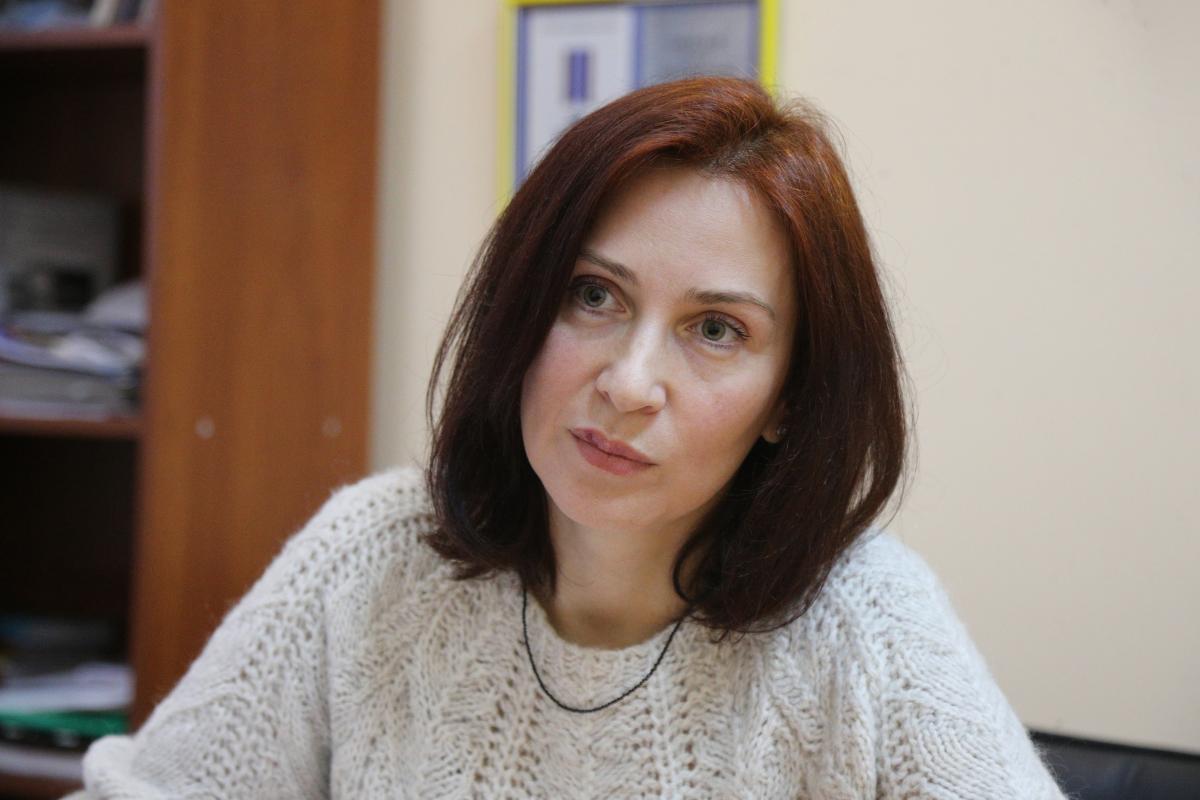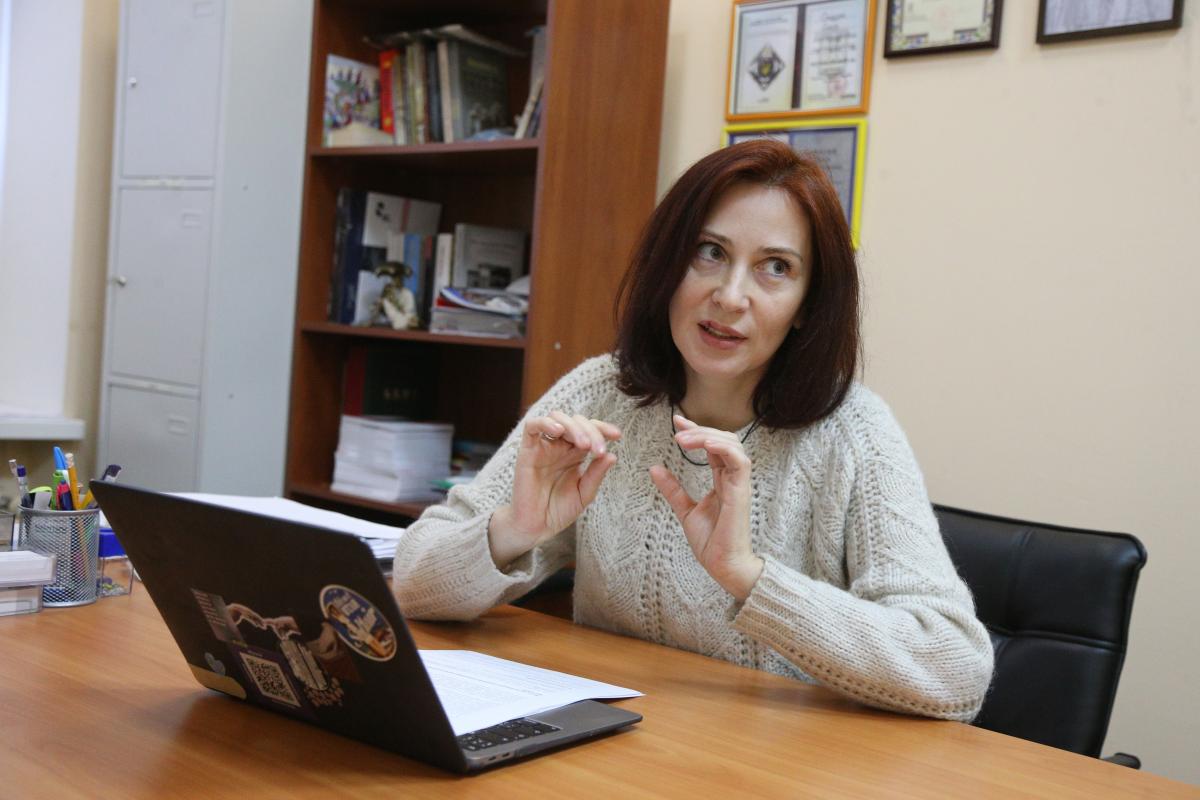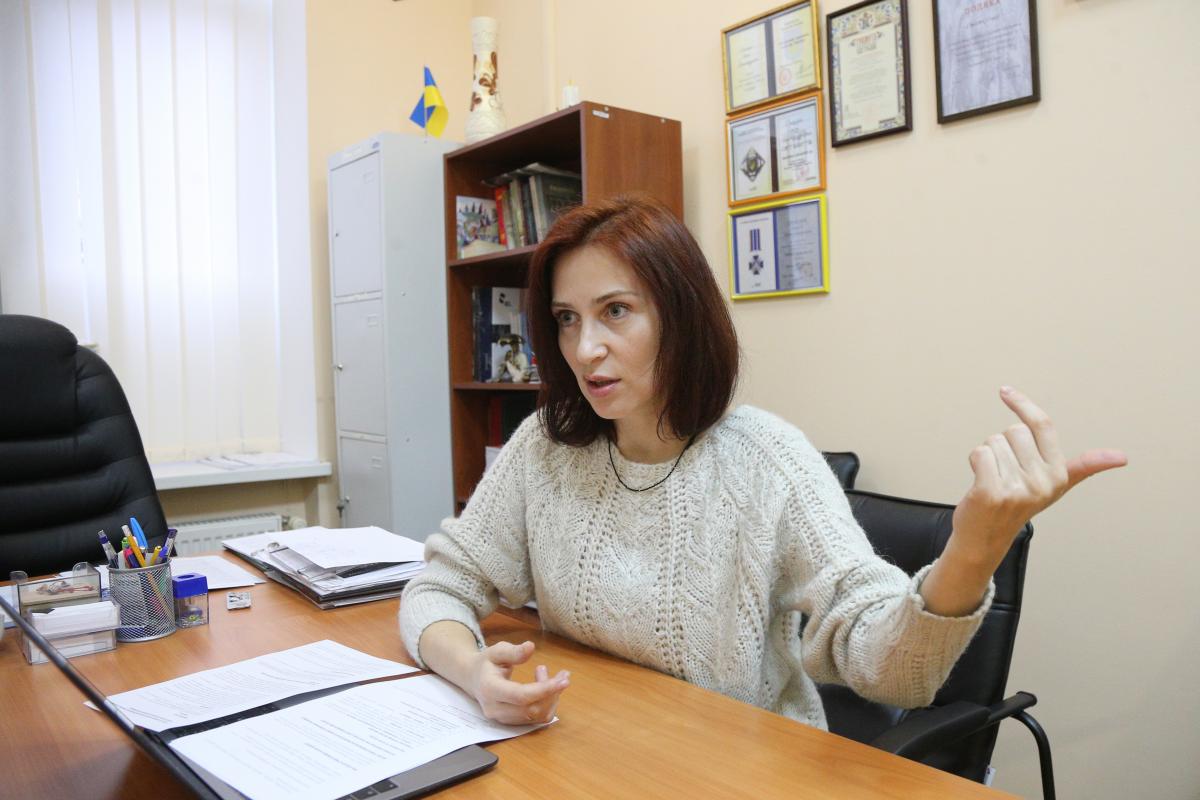
Director of the Holodomor Museum Olesya Stasiuk: We want to explain what genocide is. It's not just mass murder through famine
Olesya Stasiuk, chief of the National Museum of the Holodomor-Genocide, has sat down with UNIAN to tell about inclusive and digital projects, true history and Russian fake stories about the Holodomor, as well as why and how should children be told the truth about this crime.
In a pandemic, cultural institutions were forced to reconsider their approaches to work and learn to engage visitors without actually opening their doors to people. For example, lockdown did not prevent the National Museum of the Holodomor-Genocide from implementing two international and eight national projects. Museum head Olesya Stasiuk has told UNIAN about working amid a pandemic, their digital efforts, and countering Russian disinformation.
Who is the core of your visitors? What age groups do you focus on?
Before the pandemic, 60% of our visitors were foreign tourists, and only 40% were Ukrainians. During a pandemic, the ratio remains the same. But I would like to see the opposite.
I will not say that we focus specifically on any age category. These are young people, older people, and eyewitnesses of the Holodomor. Through interviews, we help them talk about their pain, let them understand that their memories are important. Their suffering and this crime will be remembered. Last year, a single online resource, Svidchennia [Testimonies], was launched, and together with volunteers, we digitized and published eyewitness accounts of the Holodomor and the mass artificial famines of 1921-1923 and 1946-1947.
Should every Ukrainian visit your museum at least once?
To understand the history of Ukraine of the XX century and what's happening now, this is a must. Ukrainians need to know the truth about the Holodomor genocide and why this crime was possible. As Lenin said: "Repeat in ten years, and even better – in another ten years, again."
This crime was first tested in 1921-1923. The Bolsheviks saw that due to famine, Ukrainians could be brought to their knees. Accordingly, the famine of 1932-1933 was crafted. With the famine of 1946-1947, which is called "postwar", it was the same – taking wealthy villagers' belongings, putting people in collective farms, confiscating grain. The scale was lower, however, because the communist government no longer needed to kill so many people anymore. They just had to drive Ukrainians into collective farm slavery.
Should parents tell their children about the Holodomor?
Yes, children need to be told from the age of five or six. Then they will understand the reasons to faithfully protect their country's independence. Knowing the truth about the Holodomor is a safeguard against its recurrence in the future. After all, this is what could be done to people when their country is occupied.
By the way, the museum has developed an orientation lesson for first-graders. The lesson is based on the topic of human rights and mutual respect. But it was difficult for us to find first-graders for the trial lesson, because teachers and parents are cautious. I emphasize: there is nothing horrifying for children in our lesson. Kids are fine with it. The best thing is when they bring their parents to the museum in a few days.
When telling about the Holodomor to children in high school, it's right to appeal to the documentary base. Teens should be persuaded as they might have misconceptions about this crime.

This year we plan to publish a textbook "The Holodomor – the genocide of the Ukrainian nation" for 10th graders. The Holodomor Research Institute had been preparing it for several years so that teachers would not have to search for information on the Internet (it may be fake). By the way, last year we encountered the appearance of the "sham" site of the Holodomor Museum, where various myths were presented alongside our truthful information. For example, that there was an all-national famine, not genocide of Ukrainians ... We reported this to law enforcement. Usually, such sites are created in Russia.
What should a parent tell a child when lighting a remembrance candle at home?
The best answer I heard from my three-year-old daughter when on Remembrance Day we came to see the sculpture of a girl with spikelets. She said: "Wow, people gave her so many candles and so much bread. Mom, if she has so much light and bread, she will never grieve that she died hungry. And if we don't remember them and light a candle, it will be dark and scary for her and she'll be crying. "
Why do foreigners come to the museum? This is not their history, after all.
But this is the history of Europe. In the 1930s, grain from the Soviet Union was exported. Some countries were aware that the communist government was tailoring a famine in Ukraine, so they refused to buy grain from the USSR (countries such as Austria and Switzerland). So there was some reaction. But in some countries, governments knew, but no reaction ensued. For example, in 1933, Germany bought 70% of the grain exported by the Soviet Union. And all this is the history of Europe. Seventeen countries have already recognized the Holodomor as genocide. In memory of the crime, other countries should follow suit.
In your opinion, what else can Ukraine do to ensure that more governments recognize the Holodomor as genocide?
We need to understand the importance of this recognition and work systematically in each country.
Could it be due to the fact that so few actual witnesses of the Holodomor are still alive that many countries have not yet recognized it?
It is very unfortunate that witnesses pass away. We have little time to record interview with the remaining ones. However, eyewitness accounts were also collected back in the late 1980s and 1990s, with the issue getting into limelight during Viktor Yushchenko's presidency. And the problem is that the successor to the Soviet Union, Russia, continues to this day to deny genocide on international platforms. For example, they claim there was an "all-national famine" because people were also dying of starvation in the North Caucasus. But in fact there were places of compact settlement of Ukrainians in Russia.
If there was an "all-national famine," where are your monuments and mass graves, why not honor the victims of that famine?
Russia is doing everything to shift public focus away from the main thing. But for us this issue is clear. There was genocide of Ukrainians, it was an international crime. So it's not subject to any debate.
Is it due to Russian propaganda that even some Ukrainians reject facts that the Holodomor was actually a thing?
Russia wasted a lot of energy, time, and money to deny the crime committed by communists. For 70 years, we've been under Russian occupation, subjected to propaganda. The last person sentenced for mentioning the Holodomor heard his verdict in 1986. We once had the People of Truth exhibition, a special tribute to those who, putting their careers, their freedom, or even their lives at stake, did everything they could to preserve and circulate the truth about the Holodomor.

For example, in the late 1980s, acclaimed researchers Lidia Kovalenko and Volodymyr Manyak wrote a Black Book about the Holodomor. So, Ms. Lydia would tell her colleagues that her husband had been killed ... It wasn't a car accident, as formally reported. They were intimidated because of their research into the Holodomor.
There's been less ignorance for the past years. More and more Ukrainians realize the Holodomor was in fact an act of genocide. The only thing is that we would like to explain more to the public what genocide is. It's not just mass murder through famine. Genocide is about destroying culture, destroying church, faith, intelligentsia, it's about moving children from one group to another, Russification and physical destruction or prevention of childbirth. If we understand what genocide is and show how massive it was in 1932-1933, people will perceive modern-day developments differently. We would like to tell the public more than they already know.
What do you need to this end?
Financial support from the government precisely for public projects (we do have support for construction or exhibits). Educational projects could be set up, as well as TV projects.
Last year there were some issues with financing the construction of the second stage of the museum. How are things going now?
The museum is not engaged in construction, we are working on filling the second stage of the exhibit. As far as I know, everything is fine, construction is underway.
So the exhibition should be ready by 2023?
Yes, we plan to make it by the 90th anniversary of the Holodomor genocide, by November 2023.
I would like to note that over the years, our team has been aware of the museum's issues and needs. For example, for us it's a victory to put inscriptions and names on sculptures across the museum, at the entrance. That's because we used to hear something like: "People think that it's a museum of Hiroshima and Nagasaki."
We also asked construction workers to put installations for temporary exhibits in an open-air setting. That's for the people who happen to walk by could get some information.
A screen has already been installed outside, where you can watch a schedule of upcoming events in the museum, our news and video features. After all, we saw how people have doubts about actually coming inside the museum, harboring certain prejudices about the exhibit. For example, there was this one teacher leading a group of students, telling them: "Kids, I won't be taking you inside. There are horrific photos of people dying of famine. Let's walk around the premises, I'll tell you everything myself."
For our planet, the year 2020 was about lockdown and quarantine restrictions due to a pandemic. But what were the main challenges for the museum?

Perhaps the most high-profile event was the act of vandalism against the Bitter Childhood sculpture on the night of August 22, 2020. This sparked public outrage in Ukraine and beyond. We received great support from embassies and consulates. An instant reaction soon helped restore the sculpture. Hence, the idea of deploying an honorary guard in the museum. After all, the museum is part of the President's protocol ceremony. Foreign leaders visit the museum along with their delegations.
Is that an Honorary Guard provided by the Ministry of Internal Affairs?
That's right. These can be cadets, this will look nice and raise the status of the place. We would like the Honorary Guard to appear as soon as possible. We will negotiate with the Ministry of Internal Affairs. Last year, we signed a memorandum of cooperation – they hand over to us declassified digitized case files from their archives. These are unique documents relating to the Law of Spikelets and facts of cannibalism.
Also last year there was an urgent need for going digital, to make visitors feel safe. Therefore, we made the museum more accessible online. We created a video tour and educational training courses, an "Audio Guide for Everyone" (a 40-minute audio tour translated into 33 languages). We are the first museum in Ukraine to translate our tour into so many languages.
With the support of the Ukrainian Culture Fund, we adapted our sightseeing tour for the blind, as well as the site, in accordance with international web accessibility standards. This will make it easier for visually impaired visitors to gain access to the content.
You are actively promoting digital projects. Aren't you worried a bit that visitors might stop actually visiting in person?
I don't think online projects will reduce traffic. On the contrary, those who saw the information online want to come to the museum. People want to see things with their own eyes and talk with guides.
Do you have further plans as for inclusive projects?
We'll keep up this work. We want to enhance access to the first stage of the museum, where reconstruction works are now underway. In the hall, we'll put up tactile signs for the visually impaired, install Braille boards by the sculptures of angels, a sculpture of a girl with spikelets, and at the entrance. We plan to soon present the tour in sign language.
How does someone in a wheelchair get to the museum? I only saw stairs.
We do have an elevator. It's currently being repaired but once the work is over, there'll be no problem.
What other projects in your museum would you like to talk about?
Last year we did two international and eight national projects. I've already mentioned the audio guide, allowing foreign tourists to hear the tour in their native language. We are proud of the expedition project, which together with the Ukraїner platform was implemented under a grant from the Ukrainian Culture Fund, having collected 120 video testimonies of Holodomor witnesses, as well as unique exhibits. If it's okay, I appeal to your readers: if you have in your possession any items relevant the Holodomor genocide period, please donate them to the museum. We guarantee that the family story of each such donated piece will be told. The item will be seen by entire Ukraine – and beyond. It's important.
Also with the support of the Ukrainian Culture Fund, a mobile application was created, named Track Holodomor History, which tells about Kyiv in the times of the Holodomor.
Two exhibitions were showcased: "Maria" (by a Canadian artist of Ukrainian origin Lesya Marushchak) and the world's first painting about the Holodomor "1933" and an exhibition telling about its author, the émigré artist Viktor Tsymbal. More than 200 new pieces have been added to our stock. Five publications on the Holodomor have been released.
Are you capable of attracting investment to your projects?
I won't rush with conclusions, but negotiations kicked off last year.
Are there any world museums at whose experience you should look?
We are interested in the approaches and formats applied by various world museums, because we are creating a new museum. But we cannot imitate anyone, because this is the unique, the world's first and only museum of the Holodomor-genocide of Ukrainians.
Iryna Petrenko

